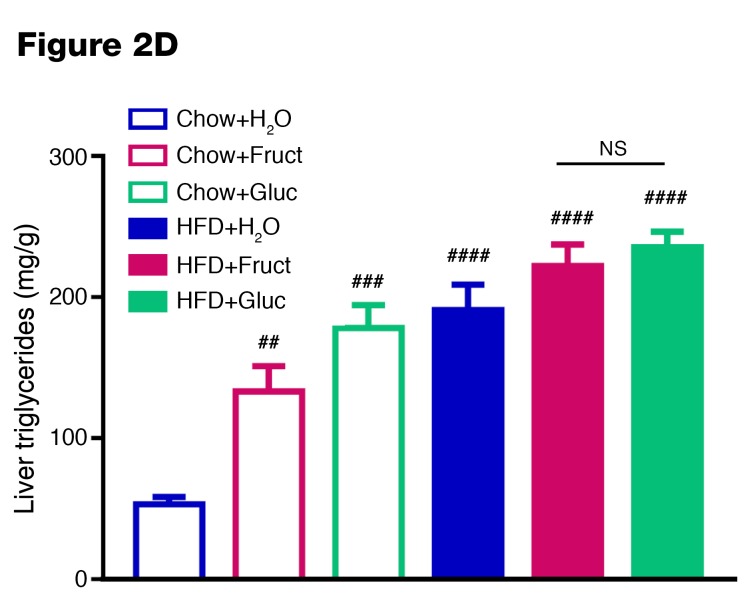Original citation: J Clin Invest. 2017;127(11):4059–4074. https://doi.org/10.1172/JCI94585
Citation for this corrigendum: J Clin Invest. 2018;128(3):1199. https://doi.org/10.1172/JCI99009
Following publication of this article, the authors became aware that reference 22 was not accurately described in Results. The corrected paragraph that pertains to this reference appears below.
ChREBP has many overlapping functions with SREBP1c, as both have been reported to increase expression of lipogenic genes, such as Fasn and Acaca (20). ChREBP has also been shown to induce fibroblast growth factor 21 (Fgf21), which can regulate fatty acid oxidation (21). In the current study, we observed increased expression of fatty acid oxidation genes in animals fed HFD+Gluc compared with HFD+Fruct in concert with increased expression of total ChREBP (Figures 3D and 4D). However, ChREBP has actually been shown to decrease expression of the key fatty acid oxidation gene CPT1a (22), and our study did not include measures of direct transcriptional activation. Thus, the general increase in fatty acid oxidation genes observed with feeding of HFD+Gluc, including increases in carnitine palmitoyltransferase 2 (Cpt2), family member 12, medium, long, and very long chain acyl–coenzyme A dehydrogenase (Acad12, Acadm, Acadl, Acadvl), acetyl–coenzyme A acyltransferase 2 (Acaa2), and the α and β subunits of hydroxyacyl–coenzyme A dehydrogenase (Hadha and Hadhb), cannot be ascribed to ChREBP. Further studies will be required to fully understand the relevant regulatory networks mediating increased expression of enzymes regulating fatty acid oxidation in mice on HFD+Gluc. However, what is clear is that glucose as compared to fructose supplementation of HFD induces very different programs of metabolic regulation in liver, reflecting both complex transcriptional and posttranscriptional regulation.
During the preparation of the manuscript, Figure 2D was inadvertently mislabeled by the journal. The corrected figure part is below.
The authors regret the error.
Version 1. 03/01/2018
Print issue publication
Footnotes
See the related article at Divergent effects of glucose and fructose on hepatic lipogenesis and insulin signaling.



